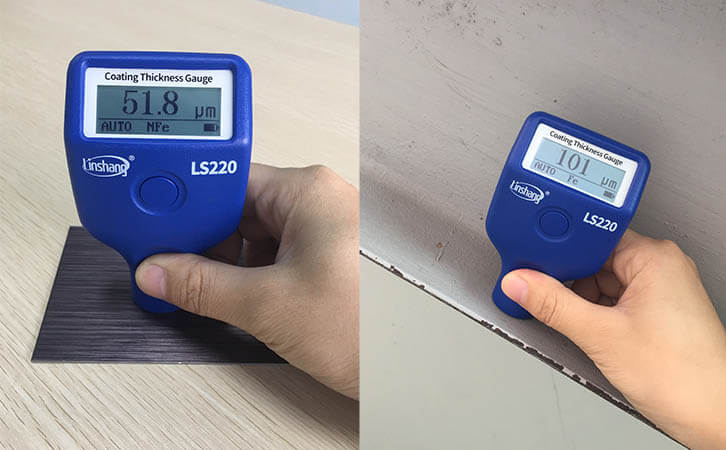Use of Magnetic Thickness Gauges and Factors Affecting Accuracy
1. What should we pay attention to when using a magnetic thickness gauge?
(1) Base metal thickness
Check whether the base metal thickness exceeds the critical thickness.
(2) Edge effect
Measurements should not be made close to sudden changes in the test piece, such as edges, holes and corners.
(3) Curvature
It shall not be measured on the curved surface of the test piece.
(4) Number of measurements
We should make several measurements for one point and take the average thickness value of the measurements.
(5) Surface cleanliness
Before measurement, remove any attached substances on the surface, such as dust, grease and corrosive substances.
(6) Substrate properties
The magnetism and surface roughness of the standard film should be similar to the magnetism and surface roughness of the substrate.
2. Factors affecting the measurement accuracy of magnetic thickness gauges
(1) Base metal magnetic
The thickness measurement by the magnetic method is affected by the magnetic change of the substrate (in practical applications, the change of the magnetic properties can be considered as slight).
(2) Base metal thickness
Each instrument has a critical thickness of the base metal. Above this thickness, the measurement is not affected by the thickness of the base metal.
(3) Edge effect
The instrument is sensitive to sharp changes in the surface shape of the test piece. Therefore, it is not reliable to measure near the edge or inside corner of the test piece.
(4) Curvature
The curvature of the test piece has an influence on the measurement. This effect always increases significantly as the radius of curvature decreases.
(5) Surface roughness
The surface roughness of the substrate and the cover has an influence on the measurement. As the degree of roughness increases, the effect increases. Rough surfaces can cause systematic and occasional errors. Each measurement should increase the number of measurements at different locations to overcome this occasional error. If the base metal is rough, you must also check the zero point of the instrument on several uncoated base metal specimens with similar roughness;
(6) Magnetic field
The strong magnetic fields generated by various electrical equipment around it will seriously interfere with the thickness measurement of the magnetic method.
(7) Attachment
It is sensitive to those adherent substances that prevent the probe from coming into close contact with the cover layer surface. Therefore, the adherent substances must be removed to ensure that the probe and the surface are in direct contact.
(8) Placement of the probe
How the probe is placed affects the measurement. During the measurement, the probe should be kept perpendicular to the sample surface.
3. LS220H eddy current + magnetic thickness gauge
Ferromagnetic metals are very different from non-ferromagnetic metals, so a special magnetic thickness gauge is required when measuring the coating thickness on ferromagnetic metal substrates), but there are currently some coating thickness gauges that can measure two types of metal substrates at the same time, such as the coating thickness gauge LS220H. It is a dual use instrument with high accuracy and convenience.
- High precision coating thickness gauge for used car
- Automotive paint protection films coating thickness gauge
- Plating Thickness Measuring Instrument for Detecting Anti-corrosion Coating
- Linshang LS220, LS191, LS160A– Necessary for Car Cover Inspection
- Coating Thickness Gauge for Second Hand Vehicle
- Zero Adjustment Step of Coating Thickness Gauge
